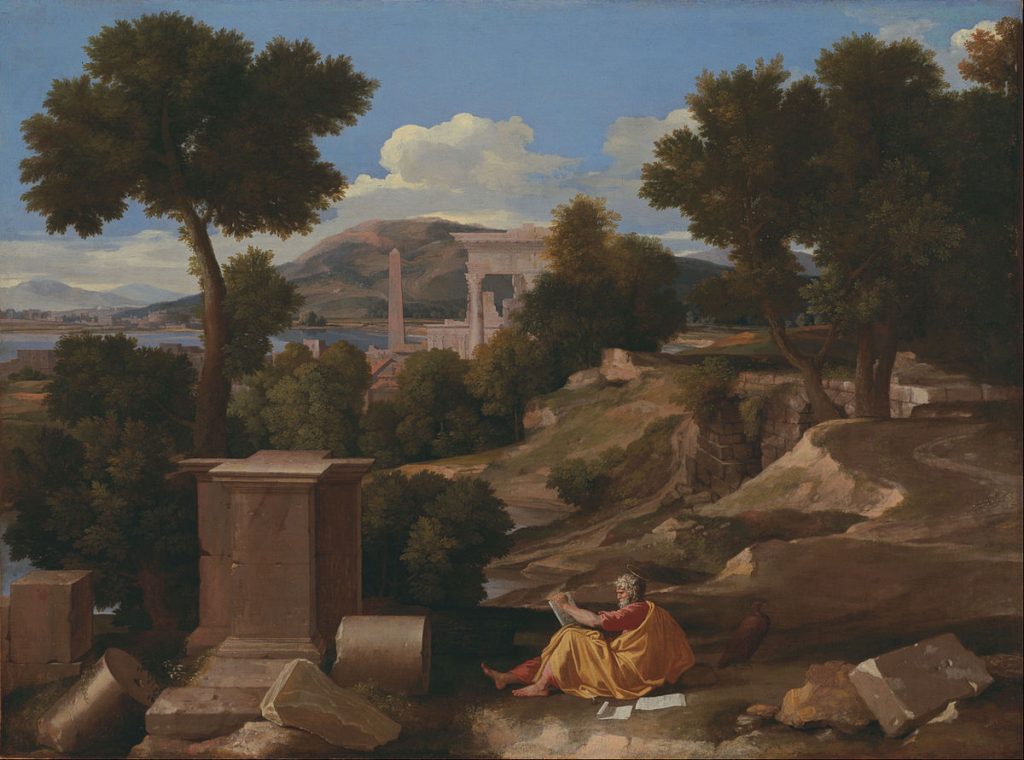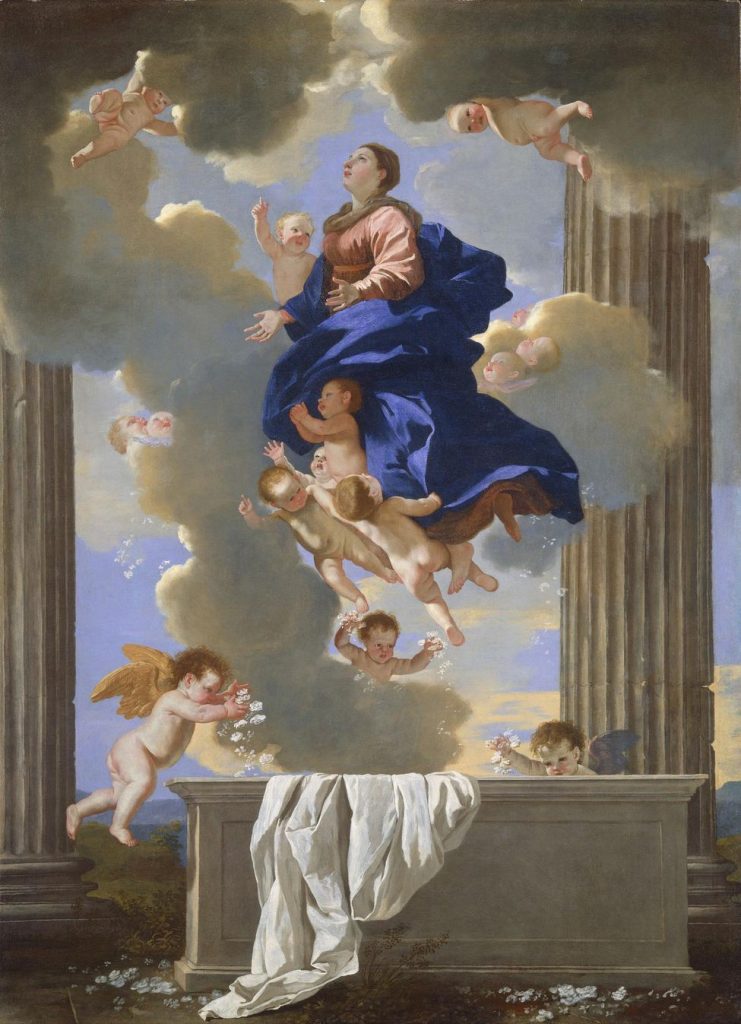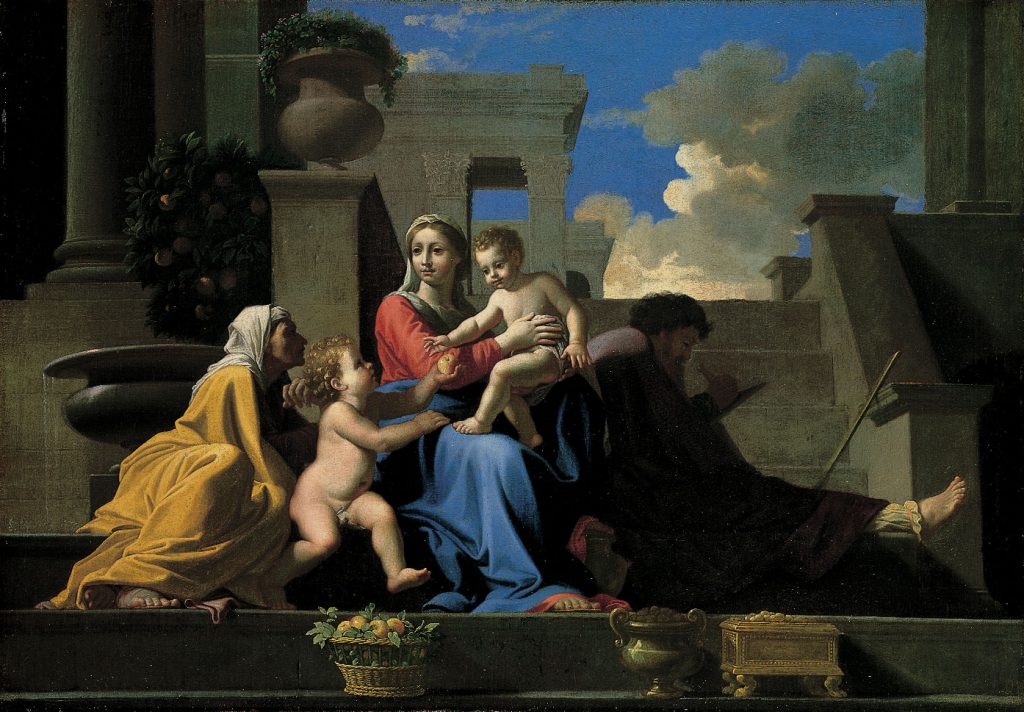Nicolas Poussin was a french painter and draftsman born in 1594 in Normandy, France. As most other well known artist, Poussin showed an interest and talent for drawing at a young age. He first studied under Quentin Varin, but soon left for Paris in 1912 where he studied architecture and anatomy. It was during his time in the city of lights where he was introduced to roman engravings of the Renaissance period which influences him to visit Rome twice between 1619 and 1922 before moving permanently there in 1624.
He soon began to work commission most notably for the Jesuits and Giabattista Manno, an italian poet. Poussins work regularly concerned the bible and mythology. His style resembled immensely Romantisms by his representation of intense emotions. In addition, he painted with vivid color palettes and loose compositions which was a direct result of his admiration for venetian painters such as Titian. However, his style changed suddenly in the late 1930. Rebuking Venetian paintings intense colors and seductivity, he took on “severe and cerebral style that emphasized clearly delineated and modelled forms and cold, pure colours.” (Encyclopedia of Britannica, 2019). Such can be notably seen in his painting Landscape with Saint John on Patmos (see fig.1) in contrast with one of his early works (see fig.2).

Figure 1. Landscape with Saint John on Patmos (ca. 1940) 
Figure 2. L’Assomption De La Vierge (ca.1630-1632)
With time, his reputation grew and commissions from prestigious clients came in. The Cardinal Richelieu and the king of Spain Philip IV to name a couple and later in 1639, Louis XIII of France. Poussin returned to France to work under his majesty until 1642 where he left back to Rome. His days in France we recalled to be some of his worst times. His creative freedom and process had been completely halted as many of his works had to be done by assistants.
Once back in Rome, Poussin continued to paint, each artwork more impressive than the previous. In 1647, Poussin defined a theoretical principle to painting – The Theory of Modes. He described that each aspect of the painting had to be chosen carefully in order to provoke an emotion from the viewer, appropriate to the paintings subject. This theory has been used over decades, most evidently in the Abstract movement which fundamentals are based on emotional response.
In his final years, Poussin refined his style both taking from Venetian and Classical painting (see fig.3). He had an ability to harmonise his colors and compositions to create simple yet dramatic pieces. His artworks had become effective and so polished, little had to be criticized about his work. Sadly, Nicolas had become increasingly ill in the past years and died in 1665 in Rome, Italy.

Work Cited:
Images:
Figure 2.
Poussin, Nicolas. “L’Assomption De La Vierge.” Libération, next.liberation.fr/culture/2015/04/17/poussin-le-gout-de-grace_1246747.
Figure 1. Poussin, Nicolas. “Landscape with Saint John on Patmos.” Wikipedia, https://en.wikipedia.org/wiki/Landscape_with_Saint_John_on_Patmos#/media/File:Nicolas_Poussin_-Landscape_with_Saint_John_on_Patmos-_Google_Art_Project.jpg
Figure 3. Poussin, Nicolas. “The Holy Family on the Steps.” Encyclopædia Britannica, Encyclopædia Britannica, Inc, 28 May 2019, www.britannica.com/biography/Nicolas-Poussin/Conversion-to-Classicism.
Websites
“Poussin, Nicolas.” The Hutchinson Unabridged Encyclopedia with Atlas and Weather Guide, edited by Helicon, 2018. Credo Reference, https://ezproxy.capilanou.ca/login?url=https://search.credoreference.com/content/topic/poussin_nicolas_1594_1665?institutionId=6884. Accessed 02 Oct. 2019.Verdi, Richard. “Nicolas Poussin.”
Encyclopædia Britannica, Encyclopædia Britannica, Inc, 28 May 2019, www.britannica.com/biography/Nicolas-Poussin/Conversion-to-Classicism.
